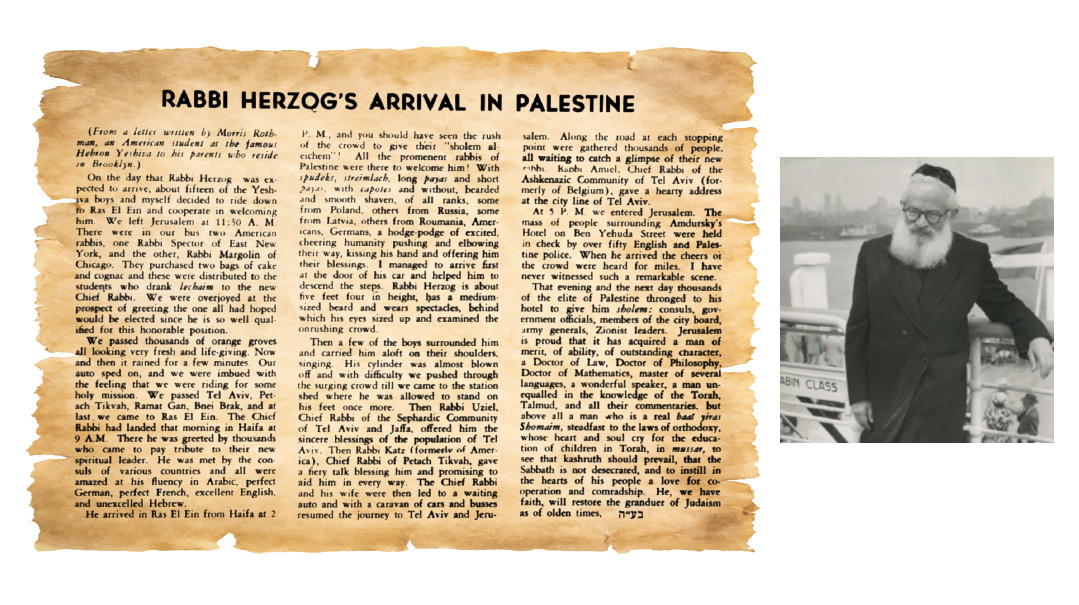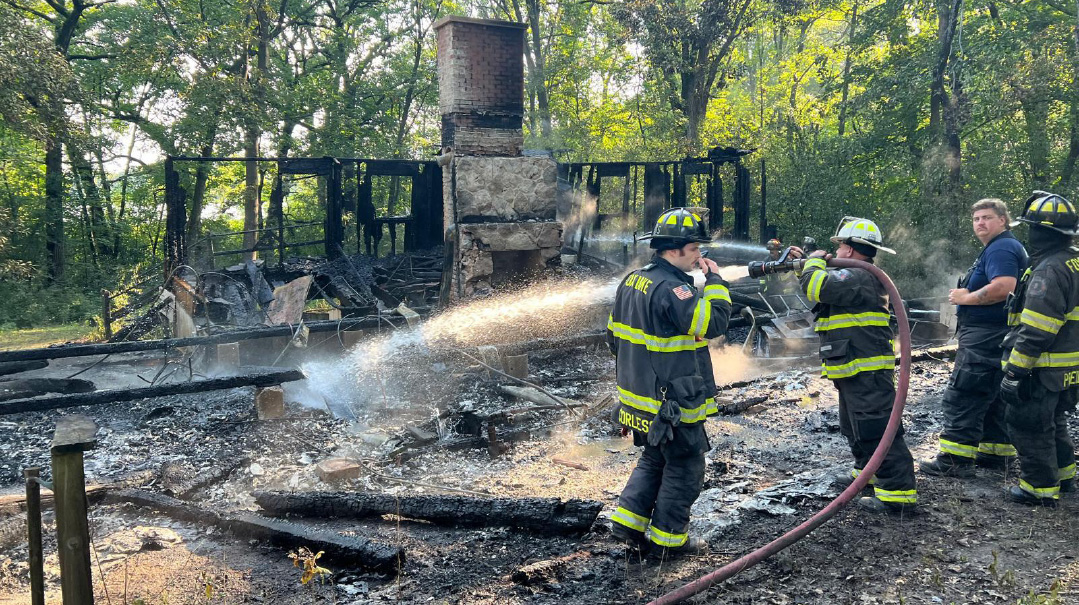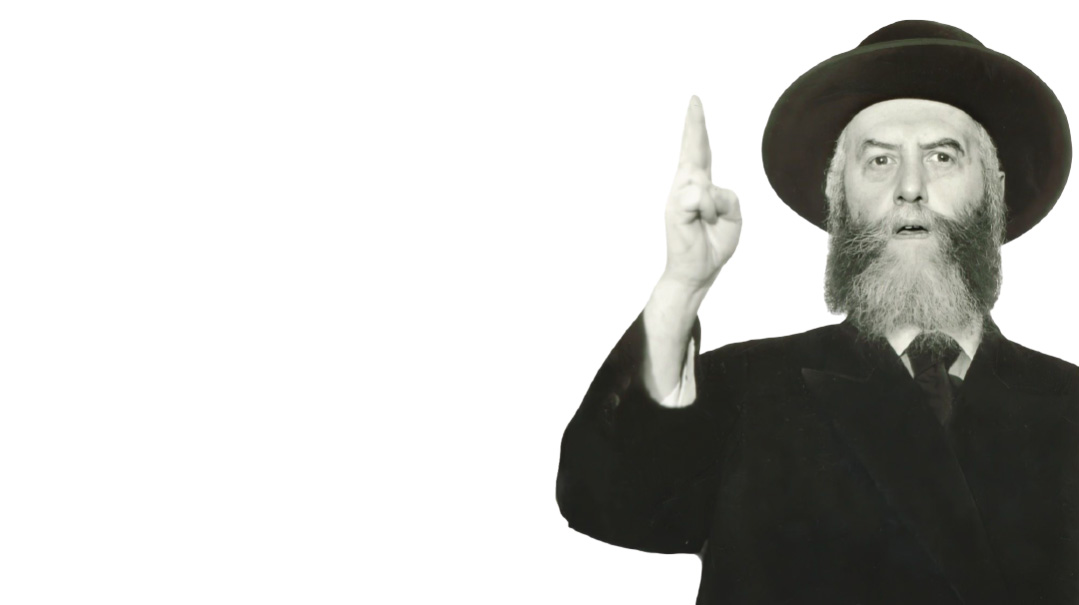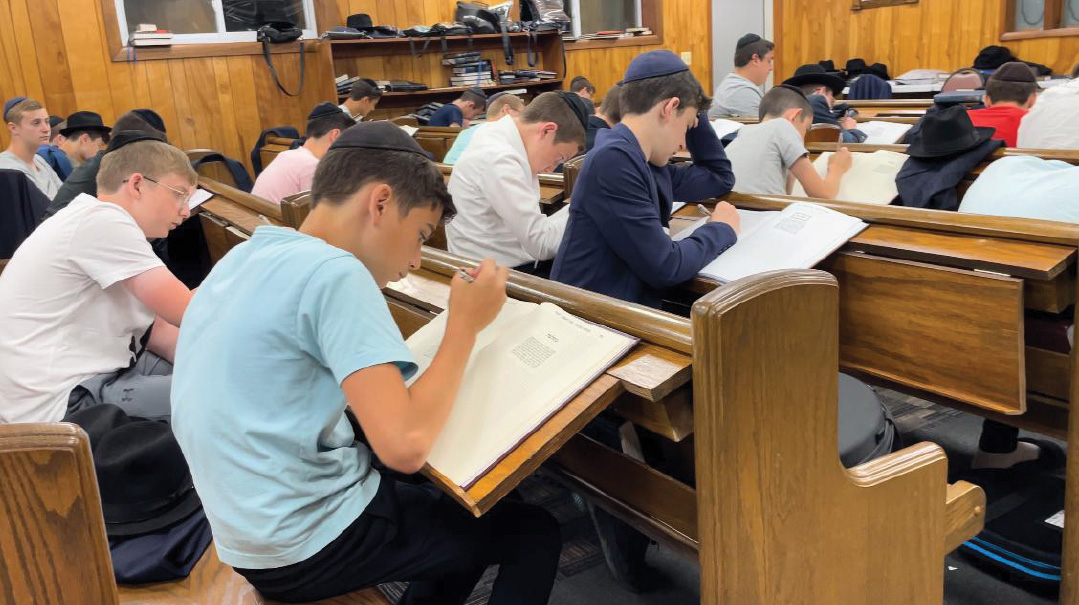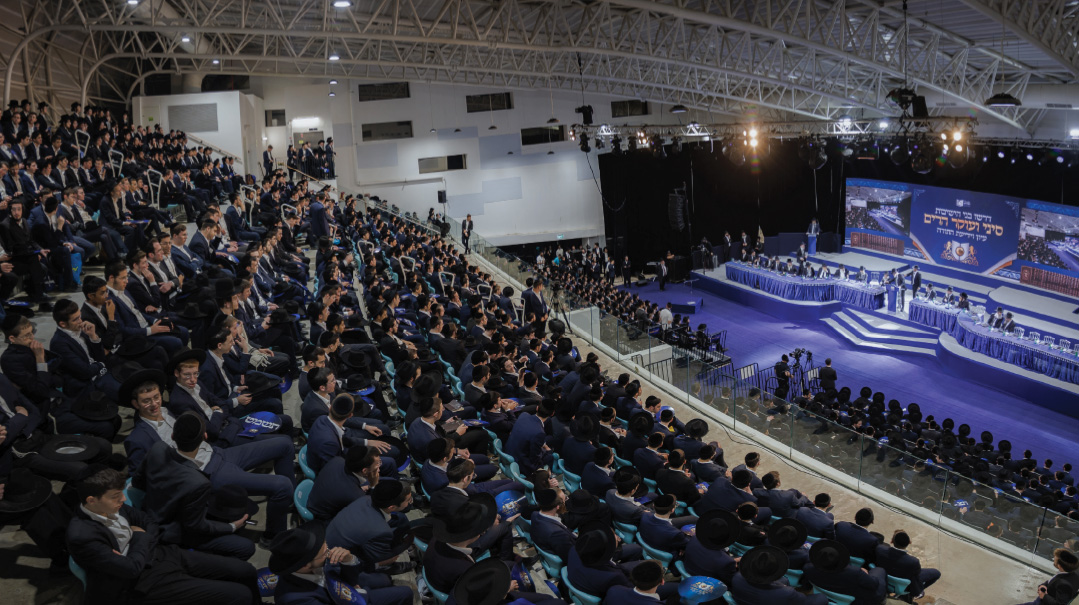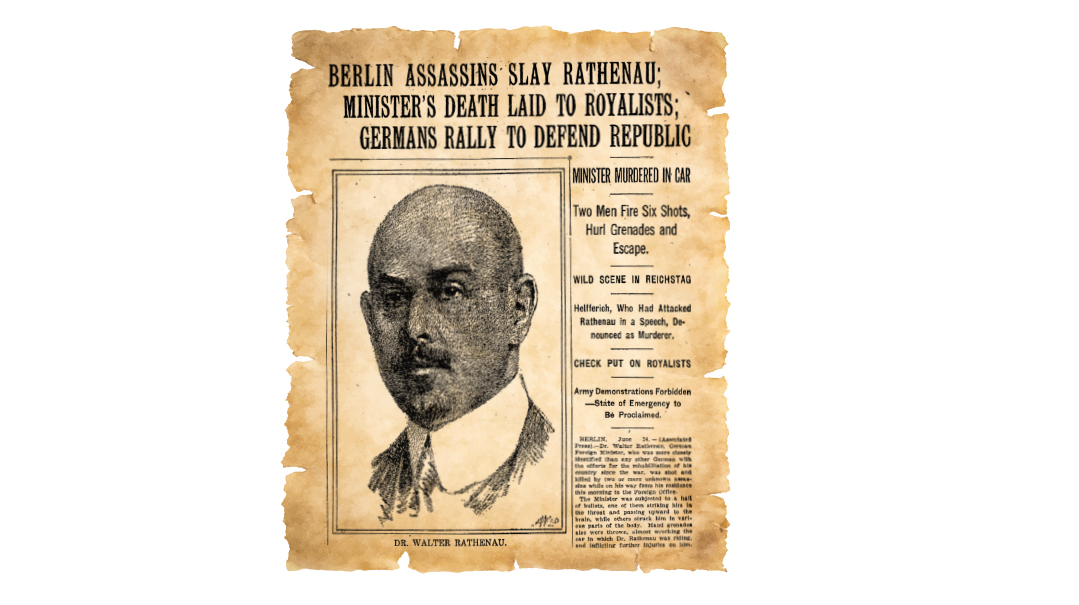The Moment: Issue 998
| February 6, 2024“Take my seat beside the aron kodesh.”
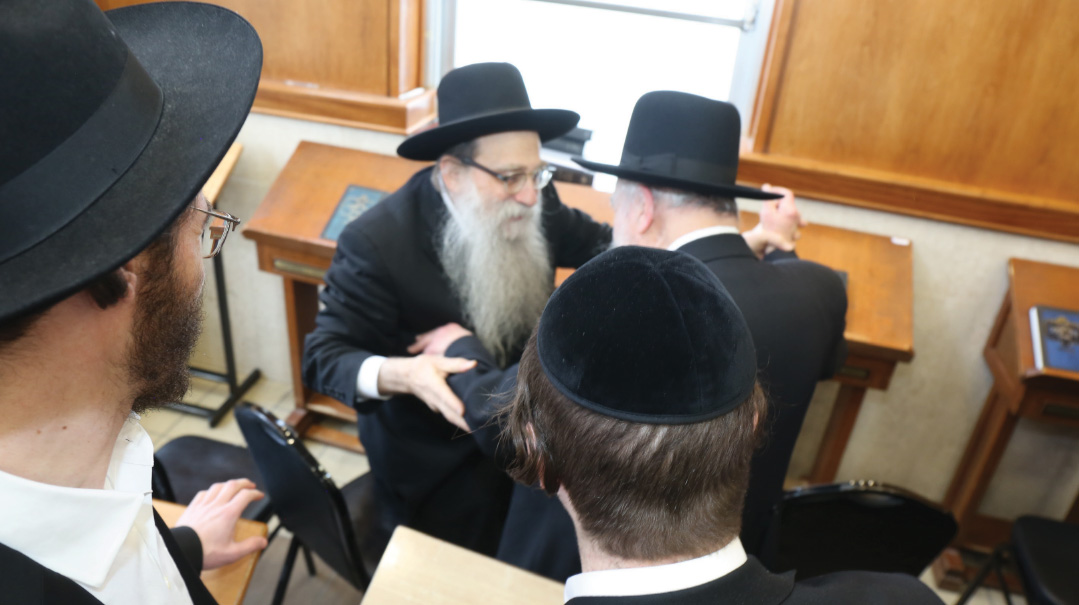
Living Higher
Last week, Rav Moshe Hillel Hirsch shlita, the rosh yeshivah of the Slabodka yeshivah in Eretz Yisrael, arrived in America for a visit spanning multiple cities. One of his first stops was in Lakewood’s Beth Medrash Govoha, where Rav Hirsch gave an intricate, brilliant shiur on the sugya of heilich to thousands of Lakewood talmidim who packed the yeshivah’s enormous dining room.
Rav Hirsch arrived in the yeshivah in time for Minchah and he was led to the “yashan” beis medrash — aptly named for its distinction as the yeshivah’s oldest building. He and his entourage were led to the front of the room, and Rav Hirsch began making his way to a seat in the corner of the mizrach vant. The crowd had largely settled down and taken their seats, but photographer Yissochor Dunoff trailed behind Rav Hirsch, camera in hand. Suddenly, the rav stopped. Standing in his way was a smiling Rav Yerucham Olshin, rosh yeshivah of Beth Medrash Govoha.
“By the aron kodesh,” the Rosh Yeshivah motioned, “take my seat beside the aron kodesh.”
But Rav Hirsch demurred, insisting he would take a different seat, some distance away from the aron kodesh. For a precious 15 seconds, the two Torah giants engaged in a friendly disagreement with each insisting that the other assume the more prominent place along the mizrach vant. Ultimately, Rav Olshin acquiesced, allowing Rav Hirsch to go to the farther seat.
It was a precious few moments viewed by only a handful of onlookers who will never forget that the most royal personalities in the Torah world think little of themselves but everything of each other.
Every Song a Lesson
This week, Rabbi Alter Yachnes, known affectionately to thousands of Jewish children as “Rebbe Alter,” was niftar. His dozens of songs pulsate with a special chein, reflecting the spirit of Torah’s beauty and capturing that spark of purity that exists within every Jewish soul.
One song in particular enjoyed an almost unrivaled level of popularity — Rebbe Alter’s iconic “Paroh b’pajama b’emtza halailah,” sung to the tune of “Baruch Hu Elokeinu.” The song, which was translated into multiple languages, has likely been sung in every Jewish kindergarten throughout the world.
Rav Nissan Kaplan, in his annual pre-Pesach drashah to his talmidim, commented that the song’s unusual popularity shows it must carry a special depth beyond its catchy rhythm and cadence. He offered two possible explanations. We know that Pharaoh continuously disregarded Moshe’s many warnings, and even when he was told that all the firstborns would die, he still refused to send the Jews free. But the true extent of Pharaoh’s denial becomes evident in the lyrics of Rebbe Alter’s song. “Paroh b’pajama b’emtza halailah” — not only did Pharaoh pay Moshe’s warning no heed, he even put on his pajamas to prepare for a peaceful night’s sleep.
Rav Kaplan’s second explanation is based on Chazal’s teaching that Pharaoh presented himself as a deity to the Egyptian people. Obviously, a true G-d doesn’t sleep; as we say in Tehillim 121, “Hinei lo yanum v’lo yishan — behold He does not sleep and He does not slumber.” When Eliyahu Hanavi challenged those who served the Baal, he mocked them saying “Ulai yashen hu — perhaps he is sleeping!”
While Pharaoh would hide his basic human limitations by visiting the Nile in early morning hours, at night, in the confines of his palace, he was able to sleep, unconcerned by public perception. However, at the outbreak of Makkas Bechoros, Pharaoh rushed outside, forgetting to remove his pajamas, revealing to all that he slept at night, in direct negation to his claim of immortality.
Rav Kaplan added that these ideas may be hinted to by a single word in Rashi. The pasuk (Shemos 12:30) says, “Vayakam Pharaoh balailah — and Pharaoh rose at night.” Rashi comments, “Mimitaso — from his bed.” Said Rav Kaplan, Rashi may be alluding to these ideas. Pharaoh rose from his bed — meaning, he had actually gone to bed, entirely dismissive of Moshe’s message. Additionally, Pharaoh’s “going to bed” became apparent to everyone as he ran through the streets. Thus, the two peshatim in “Paroh b’pajama b’emtza halailah” are actually rooted in the words of Rashi.
While Rebbe Alter has passed on to the Next World, we will continue singing his songs, with Torah lessons embedded within them.
Happening in Mexico City
The Kollel of Houston conducts an annual winter Yarchei Kallah in different cities, during which Houston community members spend 48 hours reveling in learning and inspiration. In the past, the group has been to Brooklyn, Lakewood, and Los Angeles, among other cities. This year, they opted to travel south across the border to Mexico City, where the 30 participants visited and learned in the yeshivos and kollelim dotting the city’s expanse. While the Yarchei Kallah is always uplifting, the trip to Mexico City had particular significance, as Reb Moshe Tussie, the Mexican philanthropist and mega-supporter of Torah life in Mexico City, hosted the Yarchei Kallah.
Back in 1997, when Mr. Tussie had been in Houston so his wife a”h could receive medical care, he was taken aback at the city’s lack of spiritual infrastructure. One evening after Maariv, Mr. Tussie lingered in the local shul and announced that he was donating $10,000 to fund Torah endeavors in the city. That seed money was used to initiate a kiruv project, which eventually spurred the founding of the Kollel of Houston in 2010.
The renowned high-level kollel was instrumental in turning Houston into a thriving makom Torah, and the group of Houston bnei Torah gave Mr. Tussie tangible evidence of an investment well-placed. The Kollel of Houston conducts an annual winter Yarchei Kallah in different cities, during which Houston community members spend 48 hours reveling in learning and inspiration. In the past, the group has been to Brooklyn, Lakewood, and Los Angeles, among other cities. This year, they opted to travel south across the border to Mexico City, where the 30 participants visited and learned in the yeshivos and kollelim dotting the city’s expanse. While the Yarchei Kallah is always uplifting, the trip to Mexico City had particular significance, as Reb Moshe Tussie, the Mexican philanthropist and mega-supporter of Torah life in Mexico City, hosted the Yarchei Kallah.
Back in 1997, when Mr. Tussie had been in Houston so his wife a”h could receive medical care, he was taken aback at the city’s lack of spiritual infrastructure. One evening after Maariv, Mr. Tussie lingered in the local shul and announced that he was donating $10,000 to fund Torah endeavors in the city. That seed money was used to initiate a kiruv project, which eventually spurred the founding of the Kollel of Houston in 2010.
The renowned high-level kollel was instrumental in turning Houston into a thriving makom Torah, and the group of Houston bnei Torah gave Mr. Tussie tangible evidence of an investment well-placed.
(Originally featured in Mishpacha, Issue 998)
Oops! We could not locate your form.

